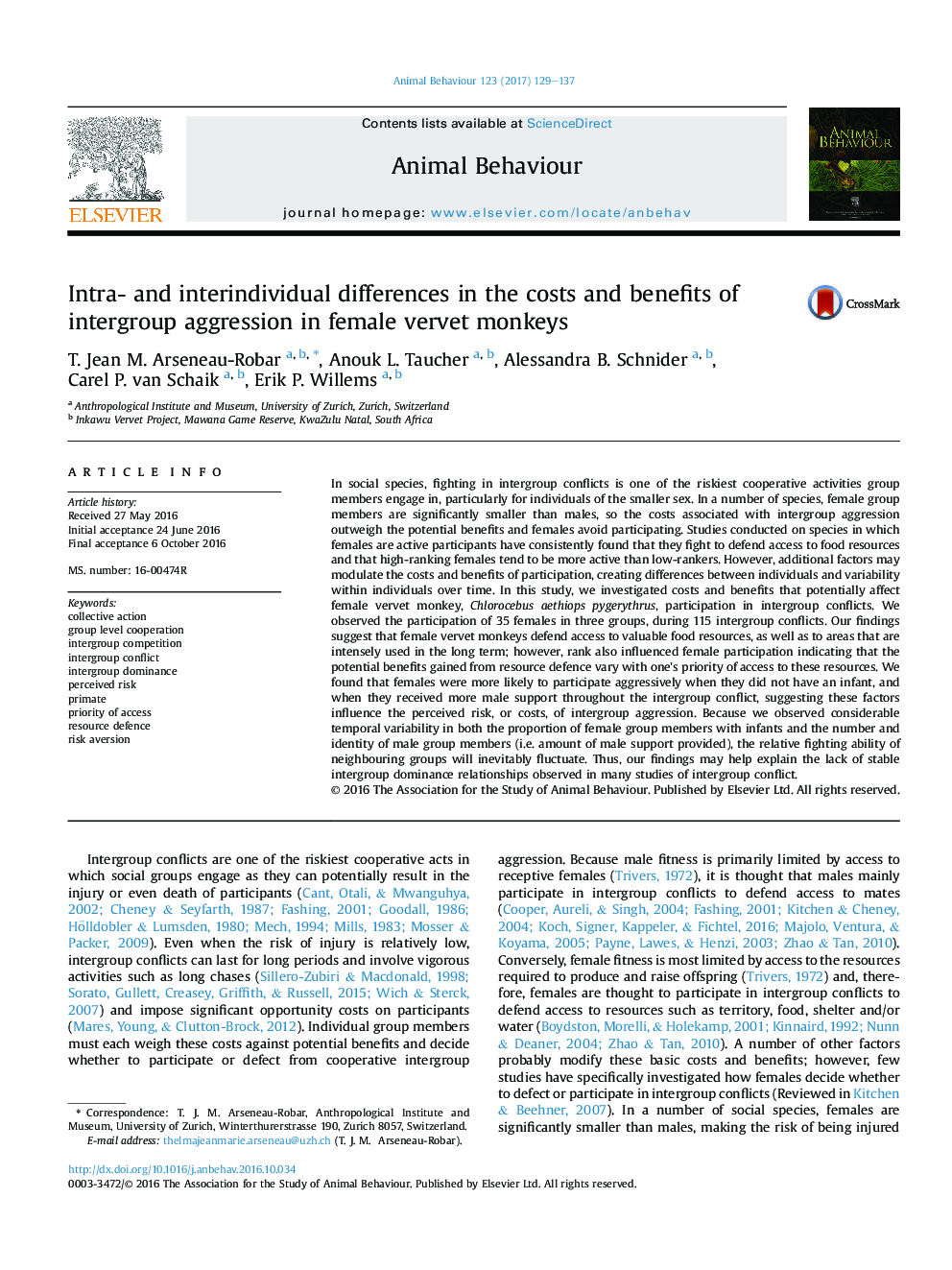| Article ID | Journal | Published Year | Pages | File Type |
|---|---|---|---|---|
| 5538577 | Animal Behaviour | 2017 | 9 Pages |
Abstract
In social species, fighting in intergroup conflicts is one of the riskiest cooperative activities group members engage in, particularly for individuals of the smaller sex. In a number of species, female group members are significantly smaller than males, so the costs associated with intergroup aggression outweigh the potential benefits and females avoid participating. Studies conducted on species in which females are active participants have consistently found that they fight to defend access to food resources and that high-ranking females tend to be more active than low-rankers. However, additional factors may modulate the costs and benefits of participation, creating differences between individuals and variability within individuals over time. In this study, we investigated costs and benefits that potentially affect female vervet monkey, Chlorocebus aethiops pygerythrus, participation in intergroup conflicts. We observed the participation of 35 females in three groups, during 115 intergroup conflicts. Our findings suggest that female vervet monkeys defend access to valuable food resources, as well as to areas that are intensely used in the long term; however, rank also influenced female participation indicating that the potential benefits gained from resource defence vary with one's priority of access to these resources. We found that females were more likely to participate aggressively when they did not have an infant, and when they received more male support throughout the intergroup conflict, suggesting these factors influence the perceived risk, or costs, of intergroup aggression. Because we observed considerable temporal variability in both the proportion of female group members with infants and the number and identity of male group members (i.e. amount of male support provided), the relative fighting ability of neighbouring groups will inevitably fluctuate. Thus, our findings may help explain the lack of stable intergroup dominance relationships observed in many studies of intergroup conflict.
Keywords
Related Topics
Life Sciences
Agricultural and Biological Sciences
Animal Science and Zoology
Authors
T. Jean M. Arseneau-Robar, Anouk L. Taucher, Alessandra B. Schnider, Carel P. van Schaik, Erik P. Willems,
